Classical Greek Art
1/30
There's no tags or description
Looks like no tags are added yet.
Name | Mastery | Learn | Test | Matching | Spaced |
|---|
No study sessions yet.
31 Terms
Polis (Poleis)
Independent Greek city-states, each with its own government and identity
Kouros/Kore
Archaic statues of nude male youths (kouroi) and clothed female figures (korai), often used as grave markers
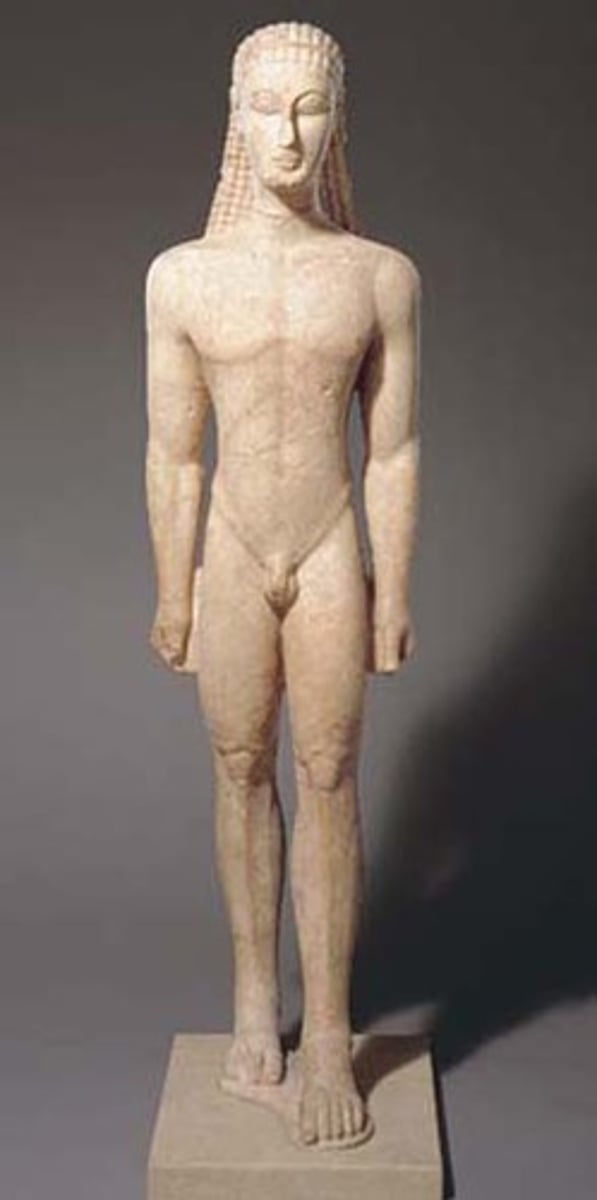
Order
A system of architectural design including column style and entablature: Doric, Ionic, and Corinthian.
Doric Order
Origin: Mainland Greece, earliest of the three orders. Features:No base; column rests directly on the stylobate. Fluted shaft with 20 grooves. Simple capital: rounded echinus and square abacus. Entablature includes triglyphs (three vertical grooves) and metopes (sculpted panels). Example: Temple of Hera at Paestum (c. 540 BCE)
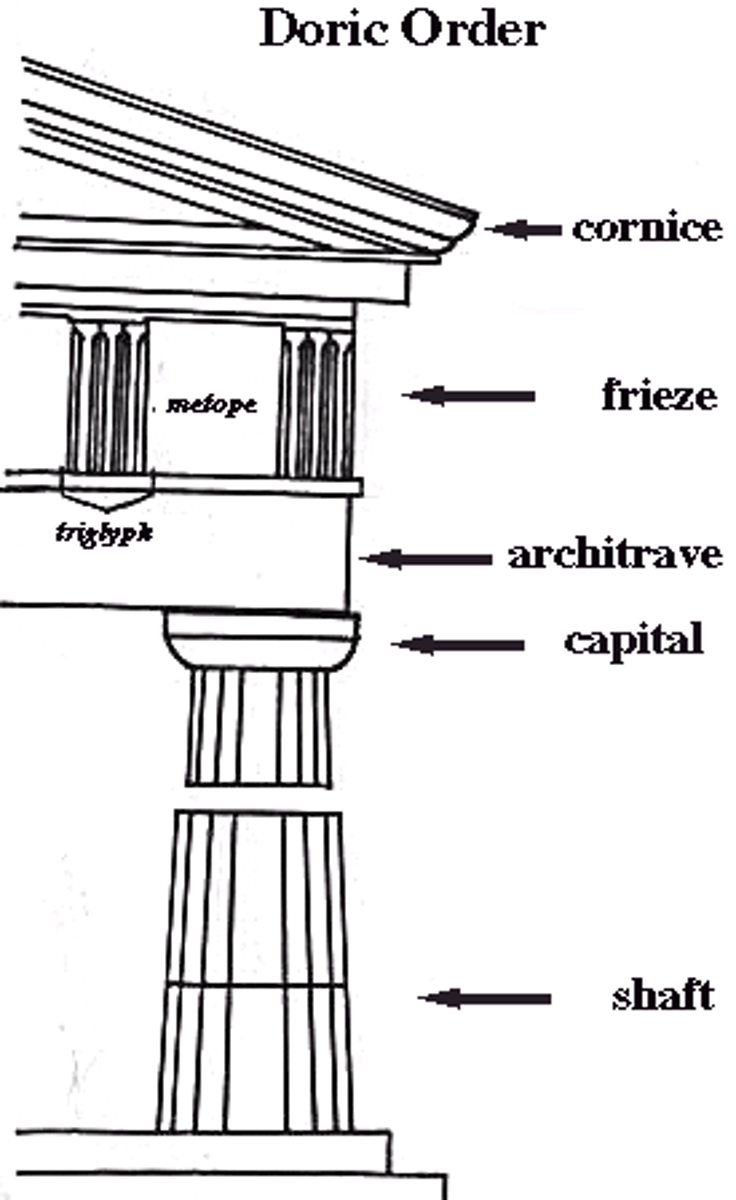
Ionic Order
Origin: Eastern Aegean islands and Asia Minor. Features:Columns have a base. More slender and elegant than Doric. Capital features volutes (scroll-like spirals). Continuous frieze instead of triglyphs/metopes. Example: Temple of Athena Nike, Acropolis
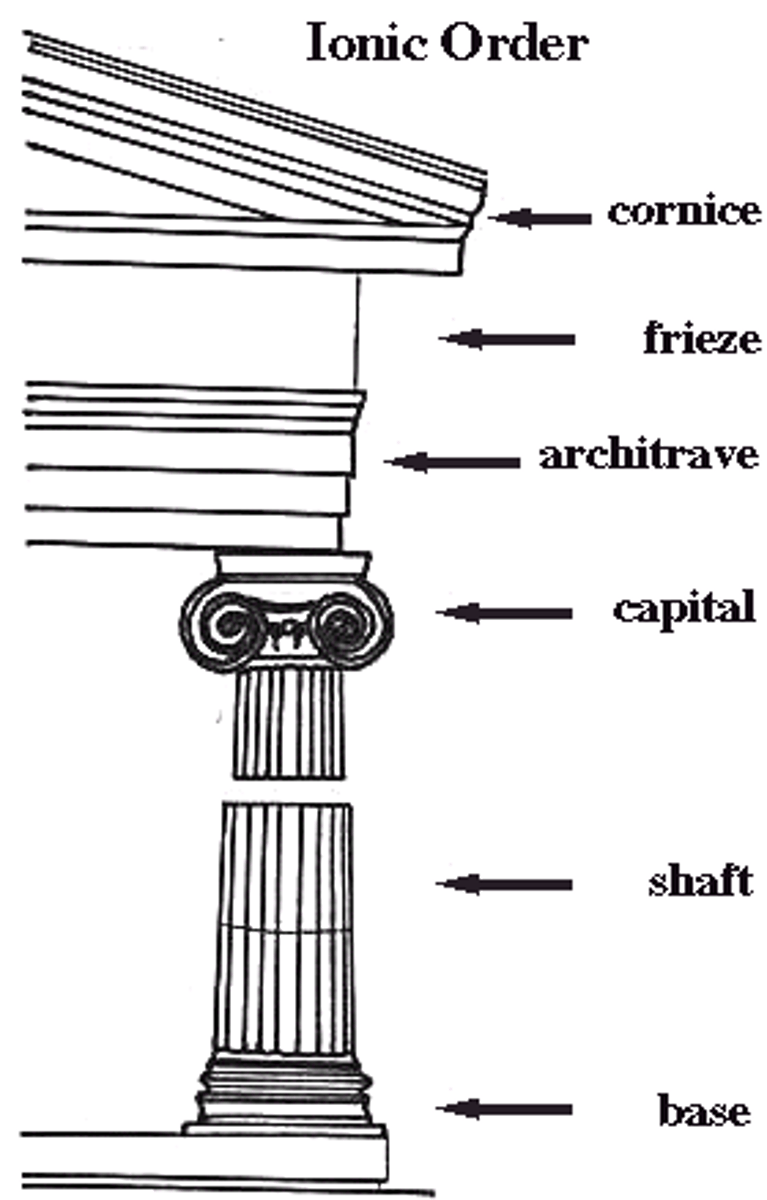
Corinthian Order
Origin: Developed later, popular in Roman architecture. Features:Elaborate capital with acanthus leaves. Similar shaft and base to Ionic. Often used for interior decoration. Example: Tholos at Epidaurus (c. 360-340 BCE)

External Elevation
The visible exterior design of a building, including columns and entablature.
Pediment
The triangular upper part of a temple façade, often filled with sculpture.
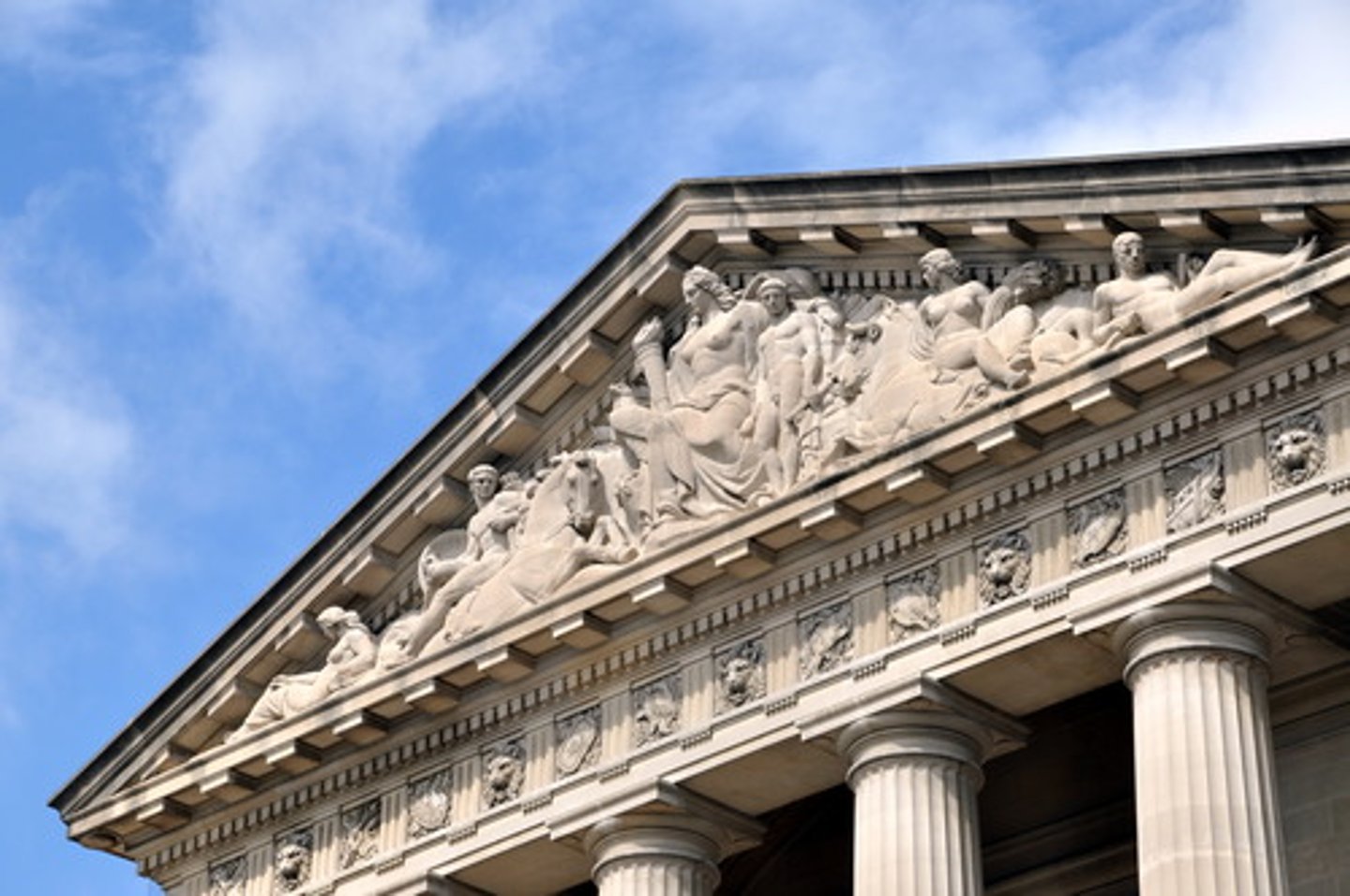
Polychrome
Multicolored decoration, especially on sculpture and architecture.
Contrapposto
A naturalistic pose where the weight is shifted onto one leg, creating asymmetry.
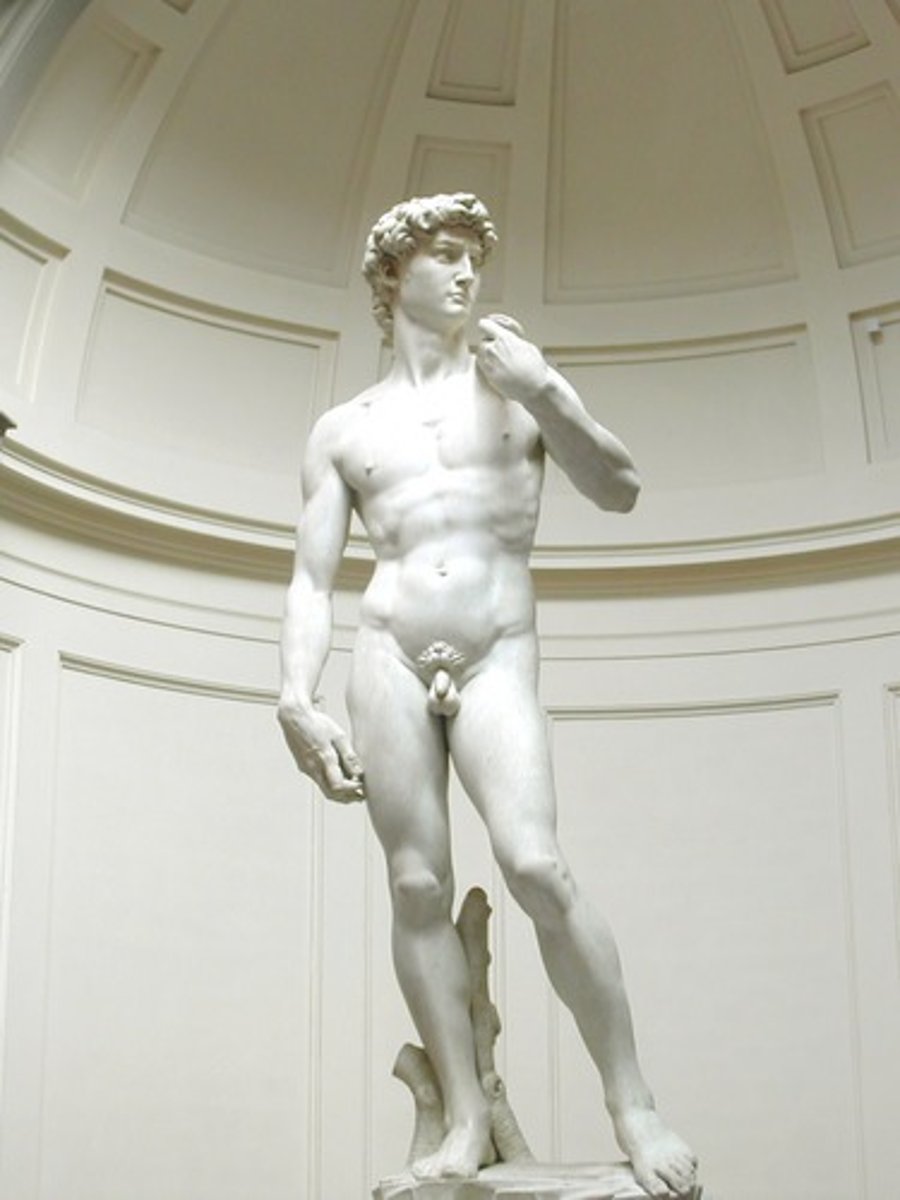
Modeling
The sculptural technique of shaping forms to suggest volume and anatomy.
Mimesis
Artistic imitation of the real world
Humanism
A cultural focus on human experience, reason, and individuality
Inset
A recessed area where a different material or object is placed
Acropolis
A high city or citadel, especially in Athens, home to important temples
Parthenon
The temple of Athena Parthenos on the Acropolis, symbol of Athenian power.
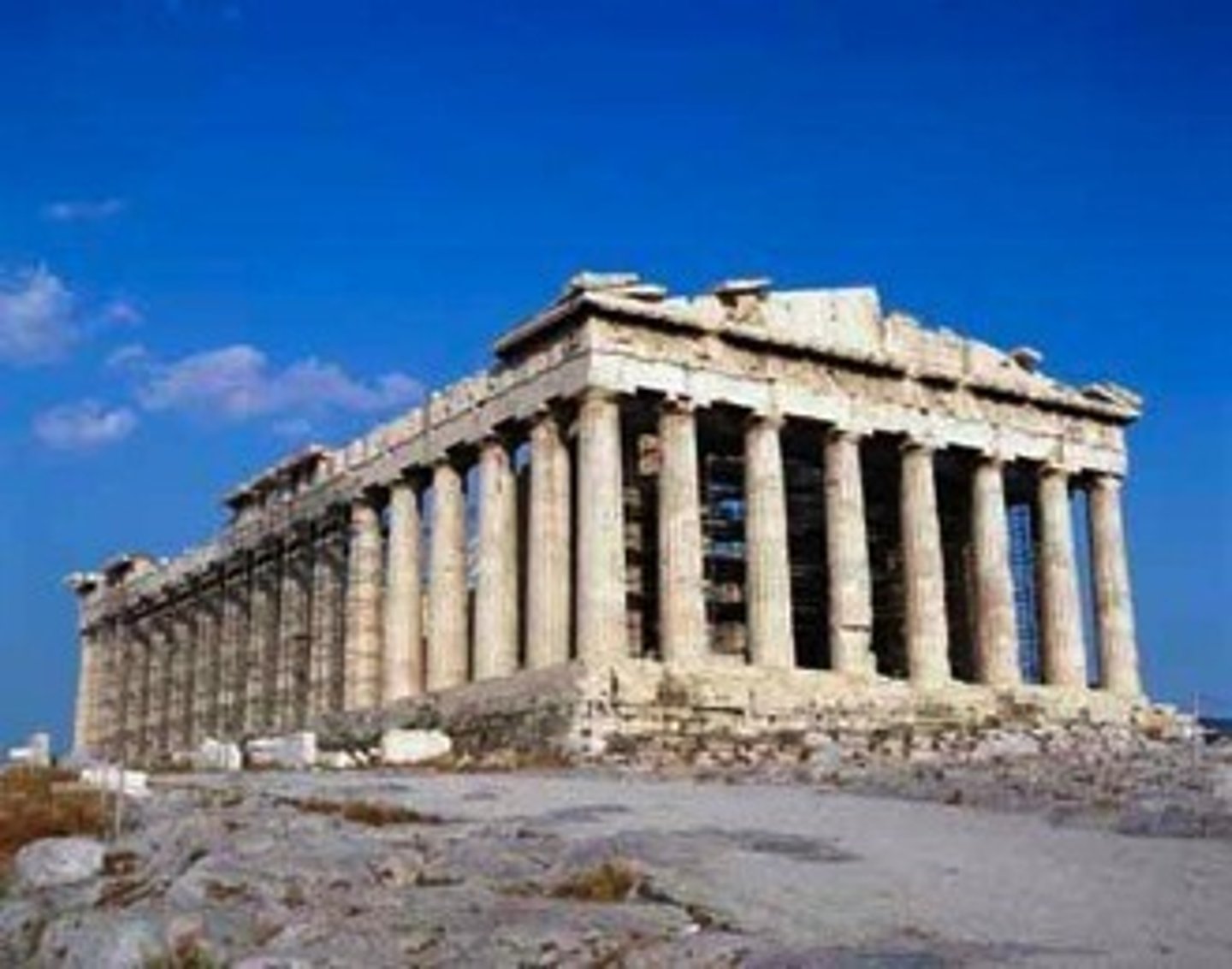
Iktinos & Kallikrates
Architects of the Parthenon
Phidias
Sculptor of the Athena Parthenos and overseer of Parthenon sculpture
Cella (Naos)
The inner chamber of a temple housing the cult statue.
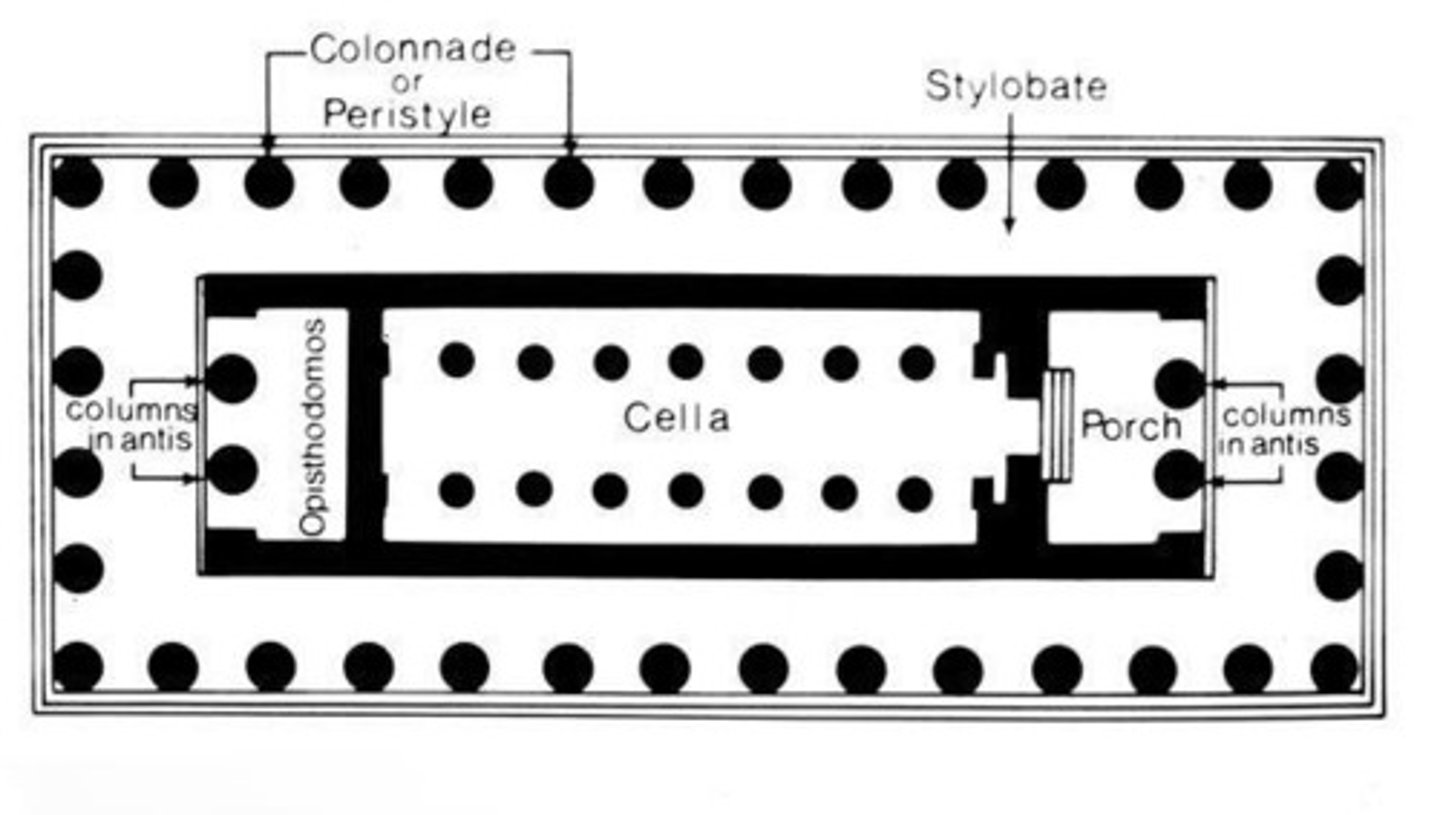
Opisthodomos
A rear room in a temple, often used for storage or offerings
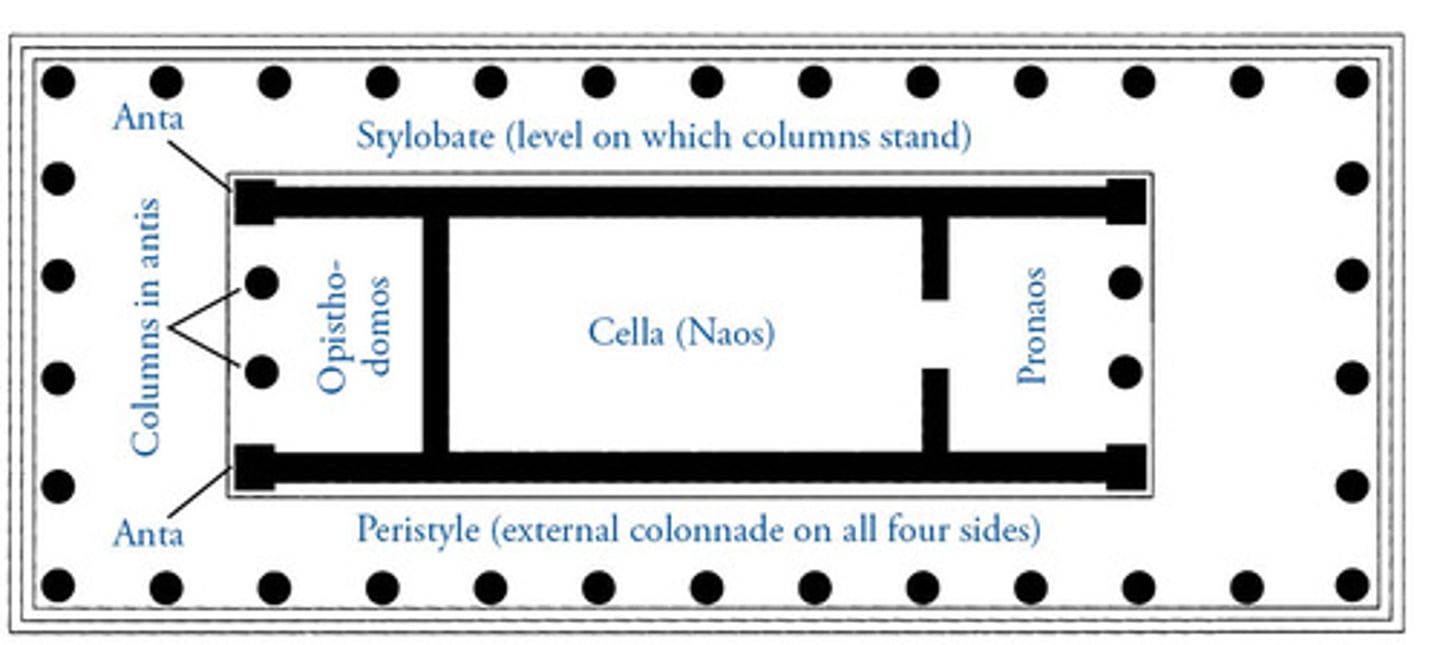
Pronaos/Opisthonaos
The front and rear porches of a temple.
Entasis
A slight bulge in a column to correct optical illusion of concavity.
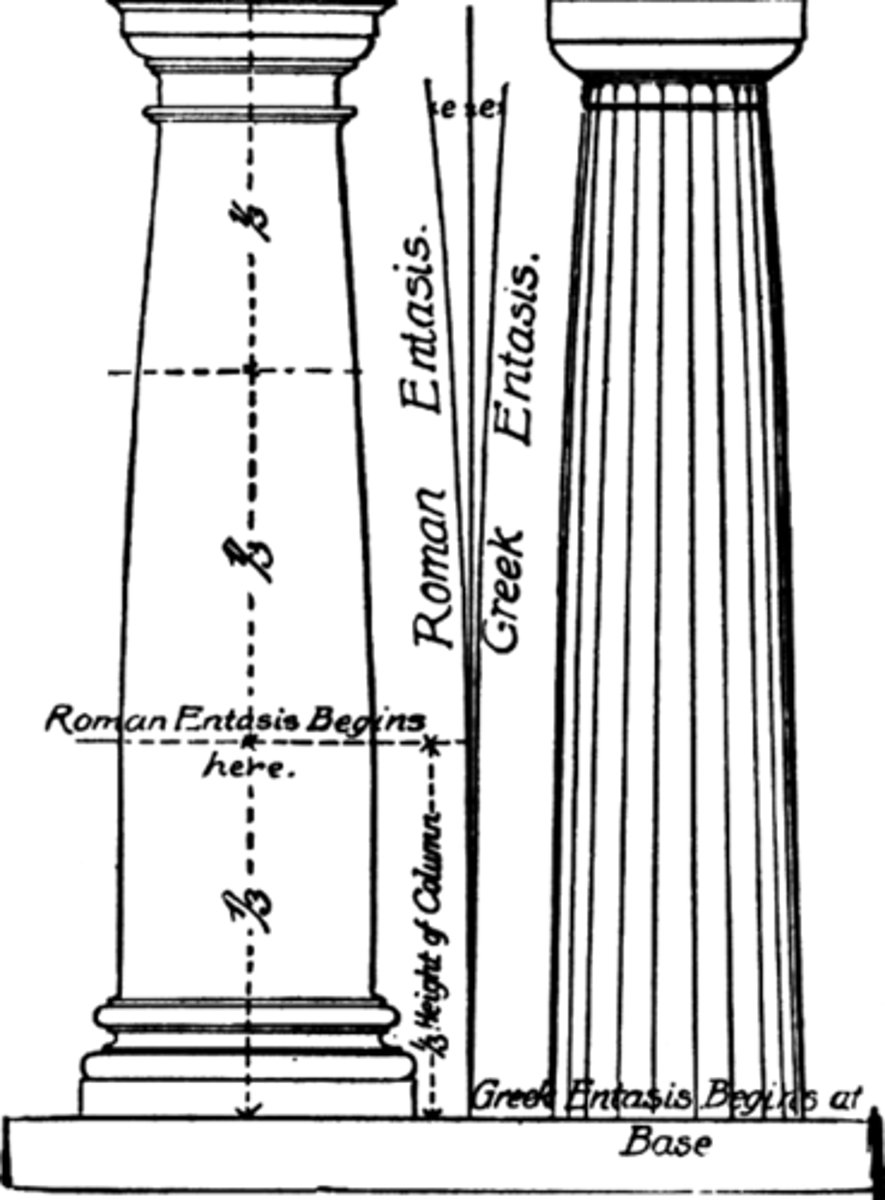
Panathenaia
A major Athenian festival honoring Athena, depicted in the Parthenon frieze.
Parthenon (Athens, 447-432 BCE)
Architects: Iktinos and Kallikrates Combines Doric exterior with Ionic interior elements. Optical refinements:
Stylobate and entablature curve upward.
Columns lean inward slightly.
Corner columns are closer together.
Entasis: subtle bulge in columns for visual correction.
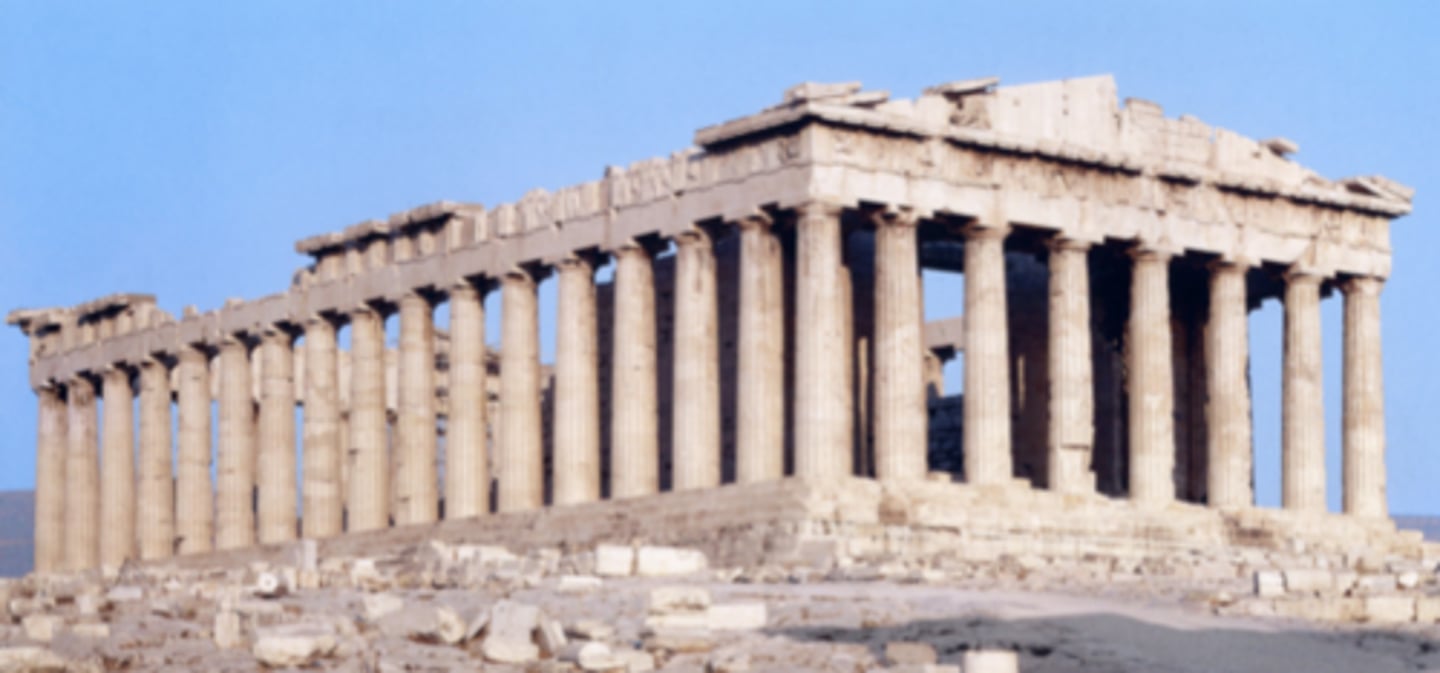
Athena Parthenos (Phidias)
Chryselephantine statue (gold and ivory). Symbol of Athenian power and divine protection. Shield and sandals depict mythological battles (Amazons, Centaurs).
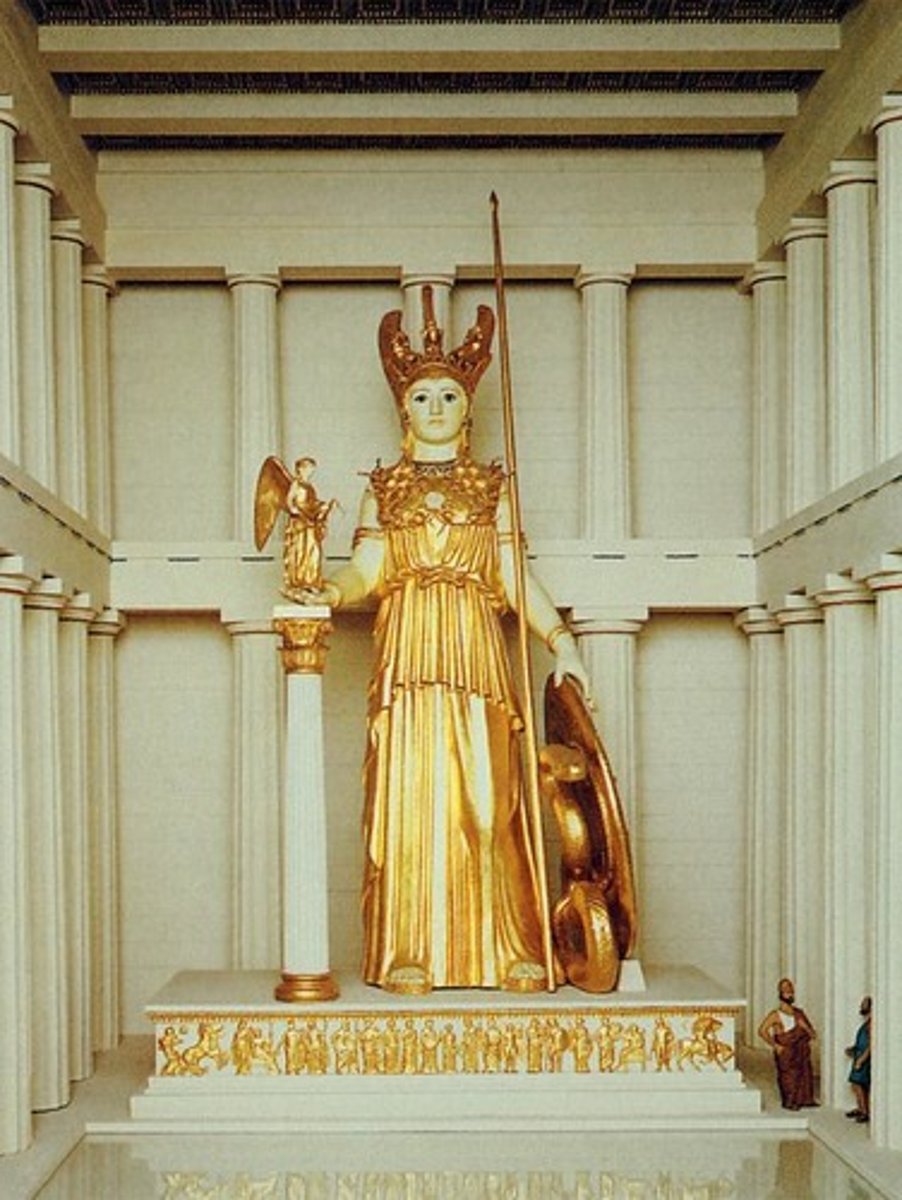
Doryphoros (Polyclitus)
Embodies the Canon of Ideal Proportions (1:8 ratio). Contrapposto stance: weight shifted onto one leg. Idealized male nude representing arete (excellence).

Aphrodite of Knidos (Praxiteles)
First major sculpture of a nude female deity. Humanized portrayal: shown bathing.
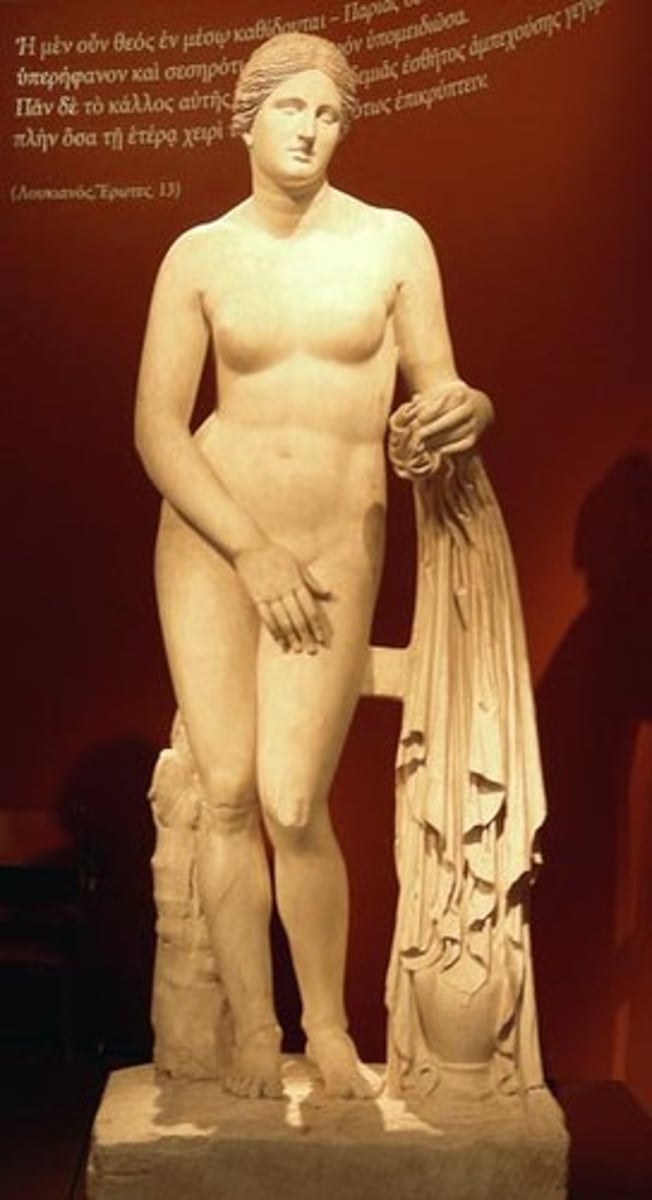
Apoxyomenos (Lysippos)
Late classical; 330 BCE; marble copy; Lysippos introduced new canon of proportions: slender bodies, head's 1/8 height of body; ancient Greeks considered beauty to be matter of "correct" proportions; apoxyomenos=athlete scraping oil from body after exercise; nervous energy visible by facial features; athlete about to switch strigil (scraper) to other hand--> this will shift weight to other side of body.

Farnese Hercules
Massive, muscular figure resting after labor. Realistic weariness contrasts with idealized body.
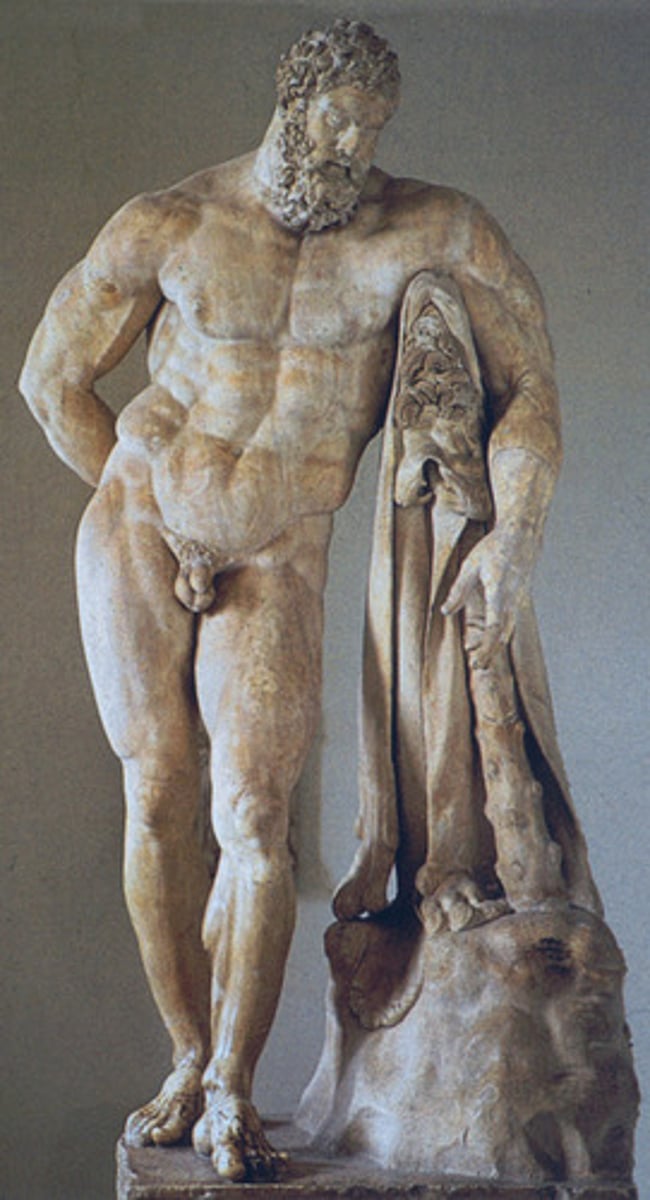
Laocoon and His Sons
Hellenistic baroque style: intense emotion, twisting forms. Depicts mythological struggle with sea serpents.
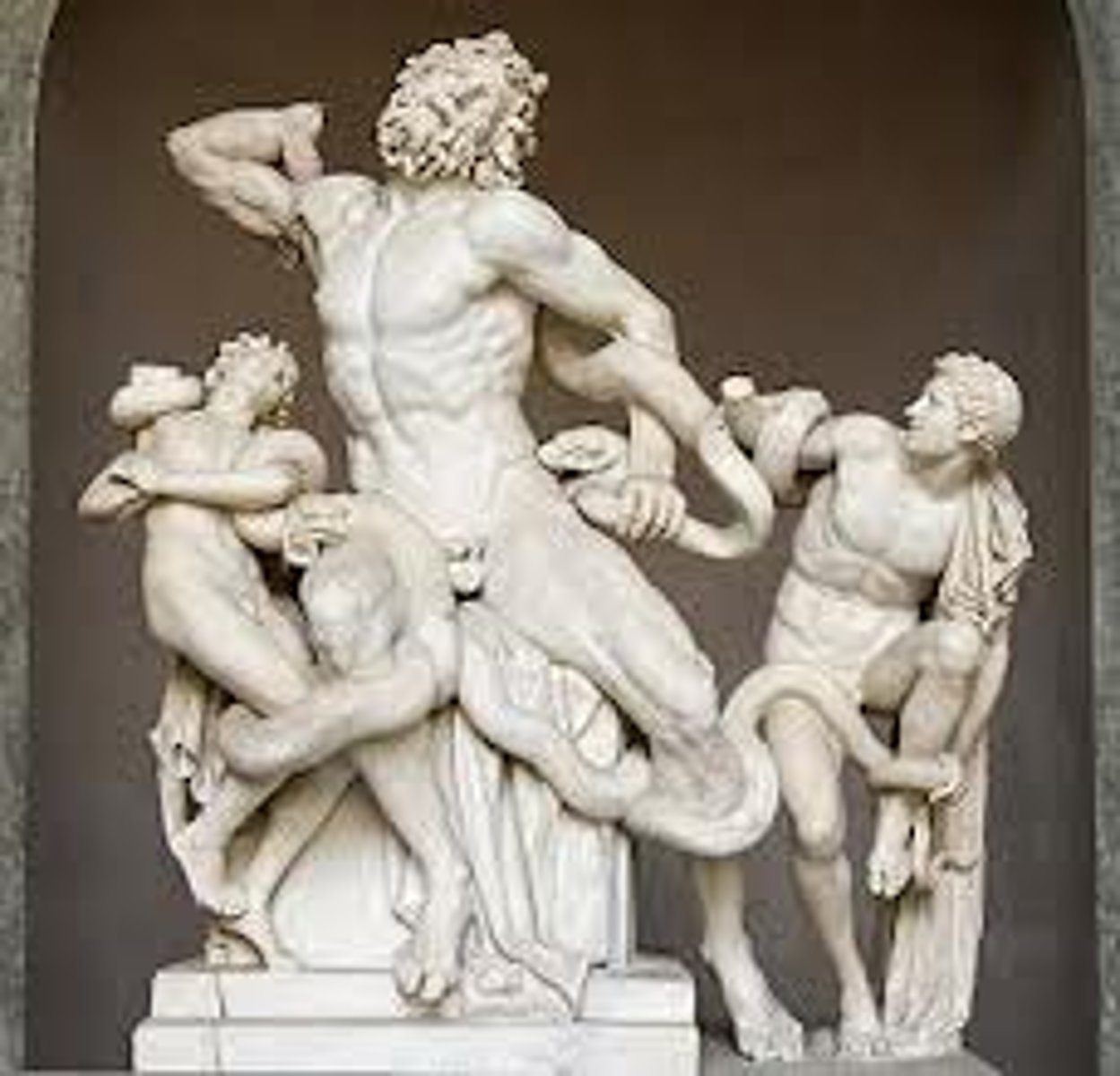
Plan of the Station Baths
Places to mingle, even elites were there!!
Accessible for most people, very low cost
Commoners still didn't have the same amenities as rich ppl